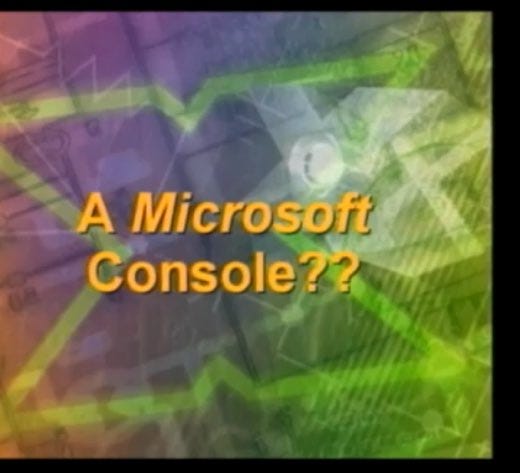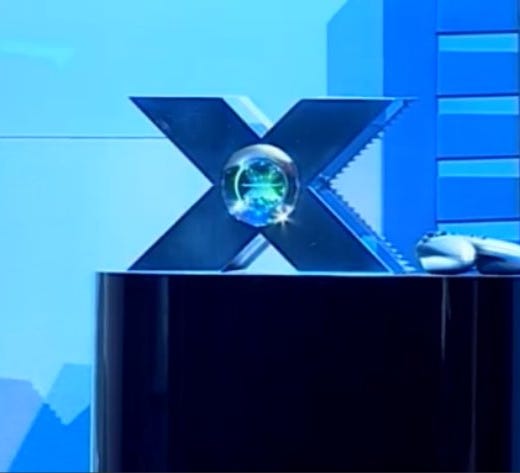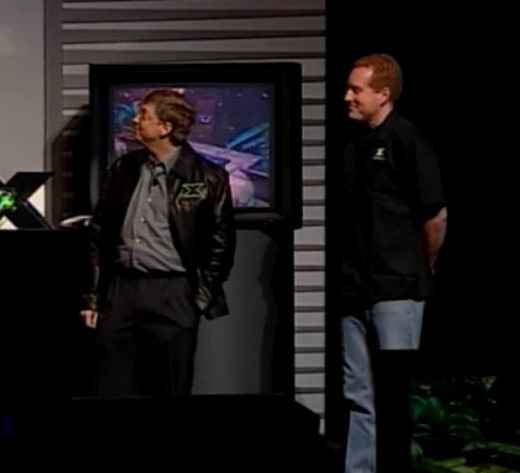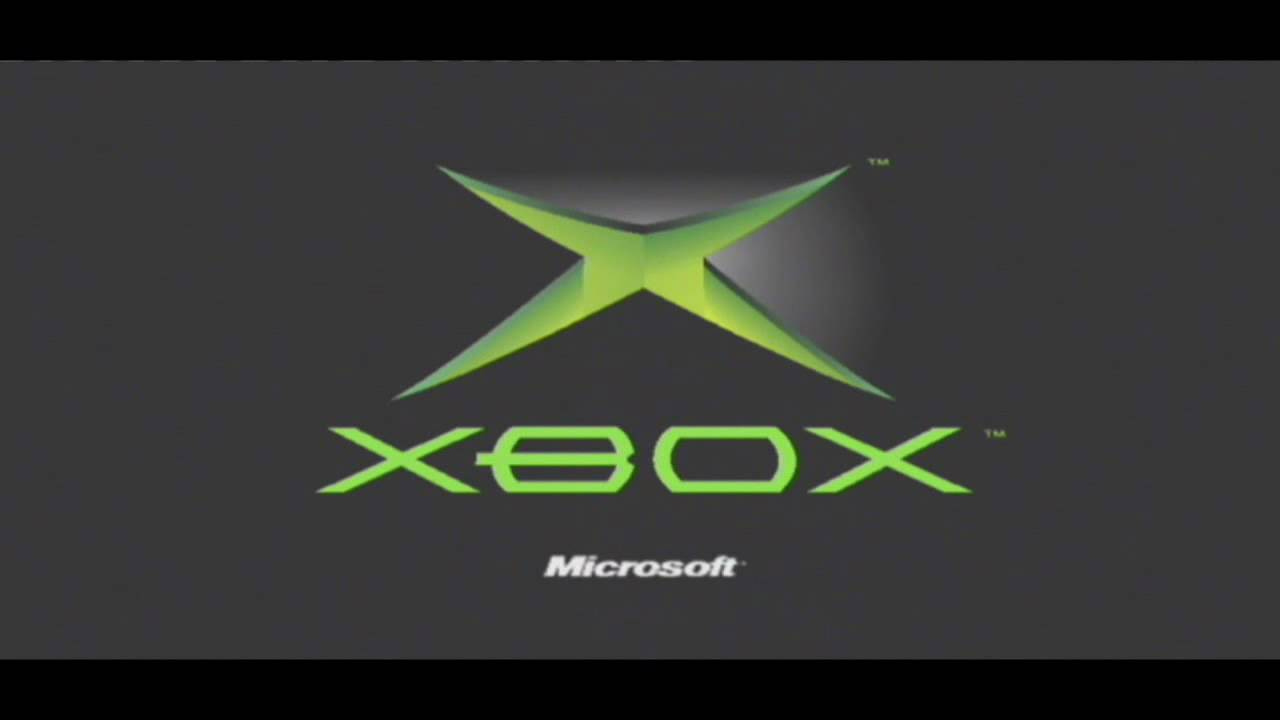MachinePix Weekly #16: Seamus Blackley, "Father of the Xbox"
Seamus Blackley on creating the Xbox, a terrible video game he made, and life as a baking influencer. This week's most popular post was a water buffalo catcher 🐮🚚
This week I sit down with Seamus Blackley, the “father of the Xbox,” and talk about his emotional rollercoaster leading Microsoft’s foray into console gaming.
The most popular post last week was a truck-mounted device for catching feral water buffalo. As always, the entire week’s breakdown is below the interview.
I’m always looking for interesting people to interview, have anyone in mind?
—Kane
Interview with Seamus Blackley
You’re considered the “father of the Xbox”, but you also say “if it moves back in, it’s paying rent.” How did you end up working in video games?
Oh Jesus. You know, there’re books about this. The overarching story is I made a really bad video game and ended up working for Microsoft. I had thought I would be a musician. I had a recording studio in Somerville, MA, and that was pretty successful, but I was failing out of school. I had to find a major I that would let me graduate in two years because I had failed the first two. Only math and physics had prerequisites I could meet. I went to the math department, met the people, and couldn’t do it. I went to physics, and it was the Fermilab guys, and they were the coolest guys in the world. I did that. I was hellbent on getting into accelerator physics, but they cancelled the Supercollider in Texas and my postdoc was gone with that. I had no idea what I would do.
I started flying aerobatics because I loved airplanes, and got a job designing aerobatic aircraft. I lost that too—but the VC financing didn’t come through as the founders had promised, so I took a temporary job to feed myself at a game company in Lexington, MA called Looking Glass Technologies. We were one of two companies in the world making real 3D games at the time. We shared code over ARPANET with our “enemy.”
What were you doing with a physics PhD at Looking Glass?
I ended up writing and inventing a lot of game physics. We put a real physics system in System Shock, and I made a flight simulator called Flight Unlimited which became one of the fist games to sell a million copies. We had fluid dynamics and stereoscopic 3D to make the flying realistic. It looks primitive now but at the time it was super high end.
I thought you said you made a really bad video game?
Yea, so I got recruited by Dreamworks, ended up working for Spielberg. He loved games—on his desk he had all these game disk boxes. I ended up making a Jurassic Park game called Jurassic Park: Trespasser, but Dreamworks was a movie company working on movie timelines.
If you ship a movie early, it doesn’t crash the theater. But if you ship a game early, it crashes and doesn’t work. It ended up being a terrific failure. This was unfortunate because it coincided with two things: first, it was the dawn of internet game fandom, and we got one of the first barrages of internet shitposting. We had no idea how to deal with it. We didn’t know how to think about internet death threats. The second is these 3D graphics cards and accelerators had just come out. But we had written all of our games to be rendered in software. So we were seeing systems with 3D graphics cards running our software renderers, they actually made the games slower and uglier. Fans were not happy.
It was a huge disaster, I thought my career was over. I had met Bill Gates because he was an investor in Dreamworks and he had come around and toured. I had demoed him our technologies—showed him dinosaurs running around, our physics systems, sounds based on physics—things common now, but back then no one had seen this before. He told me “you should come work at Microsoft.” When everything went to hell, I emailed Bill, and he asked me to come up and interview. It was terrifying, they had me do all these really intense interviews.
I had to learn how to navigate big company politics in a way I never had to before. I had a huge lesson in humility from Trespasser. I had been really successful in grad school and Looking Glass; with Trespasser I wasn’t humble, I didn’t have support, it took me down. Now at Microsoft I was a nobody. There were all these super accomplished people there already.
What precipitated the Xbox project at Microsoft?
It was 1999, Sony had just announced the PlayStation 2 and how it would be so powerful that it would potentially replace the PC. I was hired to manage graphics on Windows, and this gave me access to the product roadmaps for graphics hardware and software makers. I realized that PC graphics would soon accelerate beyond the PS2.
Funnily enough, PS2 games were all developed on PCs—the PlayStation was like an embedded system that you would develop for on PC. Moreover, PC hardware is really random, while consoles like PS2 are really standardized. That made the PS2 game experience really good because developers can tweak and tune and get every ounce of quality. I proposed we standardized the PC gaming experience with a product to run DirectX applications as best as possible. This was a smart plan to fight Sony, since Sony devs already used PCs to make their games, so in a sense they were already our devs. We wanted to make a DirectX Box: an Xbox. I wrote the proposal on a flight, and that’s how it started.
What are some of your favorite stories from that time you’re allowed to share?
There are a lot of them! It was a controversial project, and there were only a few of us. We had to get buy in, so we started out by saying internally that we were trying to bring Windows to the family room—because that’s what worked. Microsoft was an OS company, and we needed to convince a lot of people this would help Microsoft software. It was a little bit of a headfake. We weren’t saying it to be manipulative, it was more of an analogy—Xbox games would be developed on PCs and run on Microsoft Xboxes. You have to remember that it was a very small, basically secret group of people in Microsoft that had experience with games and consoles, so we had to say everything carefully for the mainstream Microsoft people who hadn’t considered the problem.
There were sometimes conflicts between existing managers and the new Xbox team. For instance, the bootup and interface roles were given to some other senior folks coming from different groups. They were Windows people, so they hired a fancy design firm to make some amazing animations and graphics without understanding the limits of this kind of system. On a game console, you couldn’t play a movie on bootup—the disk isn’t spun up yet, and many of the devices need time to reset. You have a tiny amount of memory working, and the drivers aren’t even loaded! We needed the logo to come on as fast as Nintendo, Sony, Sega etc. All the fancy movies they’d spent hundreds of thousands of dollars on were useless. I’d show up to these meetings and people would brush aside the concerns. Some thought consumers would be ok with a long bootup because the Xbox was so powerful. Are you kidding me? It’s a consumer device. We needed shit to happen on the TV the moment you touched the button.
We couldn’t use any of the fancy movies. Over a four day period, we had to craft code to algorithmically generate the logo to work on the boot. We were hand-pushing registers to the Nvidia chip.
I remember some controversy over the original controller. What was like at the time?
Talking about this is cathartic. It was really painful at the time but now it’s funny.
The original big US controller, the Duke—well everyone hated it. You knew everyone hated it because Microsoft released a bunch of consumer testing on how much everyone loved it. It was one of those things where we took our eyes off the ball because politics—“senior” Microsoft people wanted to make it—and when it came out, we were like “what the hell.” I got stuff literally thrown at me at conferences. The Windows crowd didn’t grok how important these things were.
In a larger sense, actually, Microsoft didn't really understand how passionate game fandom was. I remember Microsoft PR setting me up to do an interview with the great and venerable Walt Mossberg. He had reviewed all this hardware in his career, he has this incredible museum of devices he’s reviewed in his office. We gave him a prototype Xbox to play with. Re wrote a piece, and it was pretty good! But he sent an email after, amazed and a little scared that he had received more angry feedback about that review than the rest of his reviews that year combined. The “normies” were getting an education about why we took all this seemingly silly stuff so seriously.
How did Microsoft change course with the Duke and switch to the Controller S?
At some point, I was told that I was somehow the US manager of the most Japanese employees at Microsoft, or something like that which to me sounded like BS. But I was in Japan a lot since at that point in history, nearly all the commercially important console game studios and publishers were there, and a lot of them didn’t want to talk to us because Microsoft had no cred in games. I was trying to build these relationships. We needed them or we would fail miserably.
Bill Gates, although he was starting to become a controversial figure because of the anti-trust suits, was still a hugely loved celebrity in Japan. Someone in the Japan organization did a marketing deal with McDonalds. There were these hilarious discussions that they wanted Bill’s face on McDonalds bags. He said absolutely not. He ended up on the tray mats holding the Japanese Xbox controller, smiling goofily. He hated that. I think he’s still mad at me. No, really.
The Duke issue came to a head in Japan, because compared to the Duke, the PS2 controllers were like a quarter of the size. The size of the Duke, and its, well, bulk, was so unmarketable in Japan that many people we spoke to thought it was a prank. They thought it was a sick joke insult, like an American, Texas, look-how-big-everything-is joke. Someone got the idea to ask a lot of influential Japanese game developers and designers to sign a big letter about it, and it was finally listened to.
The guys behind the Duke controller debacle were pretty senior and I couldn’t really defeat them. We got them to concede to a special controller for Japan, which became the “Controller S.” Of course it ended up being the global default, and face was saved in that corporate Aikido way—they never had to admit defeat. Recently, I found a box of Duke prototypes and tweeted a pic. I got a lot of responses from people about the great memories they had about the Duke, which floored me, because while I was in the fight I hadn’t heard any of these positive things. Now there’s a project to relaunch it. Now I can be tongue in cheek about it.
What are you proudest of from creating Xbox?
Honestly, Sony’s support for their developers got much better after Xbox. We actively tried to make documentation and support good for our developers to woo them. Before, Sony never had to do that! Everyone does that now. I remember going to dim sum with the Sony Developer Support guys right after I left Microsoft, and they told me that things they changed because of Xbox competition, that it had made it easier for them to hire support developers, get middleware, tools, etc. That’s awesome. It’s a good policy to empower creators that have interesting ideas but aren’t the most technical.
Recently I saw you went viral on Twitter for reviving ancient yeast and making bread with it as a ‘gastroegyptologist’. What inspired that?
The bread project really took off in a weird, insane, international way and continues to be a thing during the pandemic. I’ve kind of ended up as a sourdough advisor during the pandemic. Not something I expected to happen. I was baking for a long time, and like a lot of scientists who bake, I really got into sourdough. It has a lot of interesting challenges. I started collecting my own yeast. It’s a slippery slope. I thought I should start milling my own flour. Madness lies here.
Then I started wondering if I could bake like ancient peoples. It’s actually incredibly fucking hard for a modern person because of how standardized supplies and tools are now. Wholemeal sourdough, where you grind up the grass seed and make a paste out of it, the technique to make edible bread out of that is not trivial. Same with using wild yeast. It’s really hard to write down the recipe in a precise way, because there are so many variables that it must become all about “feel.”
How did you get the ancient yeast in the first place?
The friend of mine who I know from the game industry is a pretty famous brewer now. He had got his hands on some yeast that people had made commercial beer from, “Ancient Egyptian” yeast, but it was kind of bullshit. He thought I’d get a kick out of baking with it. I did, and it got a lot of attention, but it was BS. It was apparently sampled from some artifacts but you couldn’t verify the origin of the yeast, there’s yeast all around us. It was probably yeast from museum dust, and even then not kept sterile as all these brewers used it. So I took a lot of heat online for claiming it was legit.
Egyptologists reached out to me to question the provenance of the yeast, and biologists. Worst of all, my wife told me they had a valid point, and that I was full of it. So I reached out to the loudest—an Egyptologist in Australia and a Microbiologist at University of Iowa—and asked them how we could fix this and actually capture and keep authentic ancient yeast. I’ve always been a fan of Egyptology, I knew Middle Kingdom hieroglyphics so I had some credibility, and they said yes! So we developed a way to extract ancient ancient yeast.
So next thing I know, I’m dressed in a cleanroom suit in a basement at Harvard extracting microbes from a ~5000 year old pot. And then at the MFA, where they have a much bigger collection. I got to go through the employee entrance, which made me feel like a scam artist, and it turns out that under the museum they have all these incredible artifacts, things that I’d only ever seen in pictures. The Egyptologist was just handing them to me and I had to pretend like I knew what I was doing! We got yeast from many, beautiful and ancient beer- and bread-making vessels. By the way, ancient Egyptian beer was kind of like a boozy oatmeal, so please stop asking, everyone, for us to make “modern” beer from the yeast samples. It’s not what you think, but I think it will be good. Patience.
How did it taste? Were there any risks?
Ridiculously good. Extraordinarily good bread. There’s an Instagram fad for very bubbly sourdough bread made with high protein, high extraction white flour. These ancient loaves don’t have those huge holes, they were made as serious food, and even represented a kind of currency. So the nature of the crumb is different. They’re very soft, very rich. Stronger flavors, a more umami flavor. Very filling, extremely high in fiber.
Any side projects you’re working on right now?
Yea, I’ll tell you more when I post it but it’s really fun, and a little nuts. It’s nuclear physics based, back to my roots I guess. I’m buying lots of lead and paraffin soon.
What are you reading?
I’m reading a lot of historical stuff right now. There are two books I really recommend: Night, by Ellie Wiesel, and A Soldier’s Story, by Omar Bradley.
What’s your favorite simple (or not so simple) tool or hack that you think is under-appreciated?
Printing out code. If you’re trying to find a bug and there’s a block, print it out. It helps you see your code in different ways. Sounds stupid, but trust me, and remember you got it here! Ha!
The Week in Review
For some reason the textile roof on this thing made me lol.
The interior of the lighthouse is stunning!
This week’s most popular post! Unfortunately, water buffalo are invasive and dangerous in Australia. Hence the Mad-Max-esque capturing equipment.
Dom does very cool topographic sculpture work.
I didn’t intend this week to be so bovine-oriented. I wish I had a closer shot, but the Kamov Ka-32 is one of the few coaxial rotor helicopters in use.
Postscript
If you are a US citizen, I hope you vote!
If you enjoyed this newsletter, forward it to friends (or interesting enemies). I am always looking to connect with interesting people and learn about interesting machines—reach out!
—Kane
























